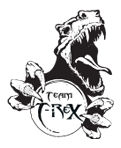Building Boulders
Rarely do you ever hear ‘his shoulders are too big’ or ‘her delts were too round’….it’s one of those body parts that’s rarely ever a detriment to the physique – unless it’s lacking. Having well developed shoulders, capped and rounded from front to back just screams that you put thought into your physique and train with a purpose. The delts are the accent on the v-taper, the icing on the cupcake and the bacon on the burger. They just create a much more powerful physique overall.
I wouldn’t say I have all the secrets to training shoulders. But I have spent enough time in the game to know what works and what doesn’t. You can either continue doing what you’ve done or you can experiment and try different things until you figure it out. I always chose the latter and refused to just accept what the standard message was – just because that’s what Joe IFBB pro was doing. In this article I will share some of the things that have worked for me as well as many athletes on Team T-Rex when it comes to developing pumpkin striated delts.
Frequency – More is not better when it comes to delts. At least once a month I meet someone that’s training the hell out of their delts in an effort to make them grow. They have a back day, a chest day, at least two shoulder days and an arm day. Guess what – muscles grow when they have a chance to rest, not by constantly pounding them into an overtrained state that’s not conducive to hypertrophy. I advocate no more than one shoulder day per week and in some instances where an individual has been overtraining delts, I’ll eliminate the shoulder day all together. Might seem counter intuitive to do something like this but people forget how much work your delts are putting in on other days like chest, back (and even arms for some sloppy lifters). To this day, the best my shoulders have ever looked for a show was a period of time when I had no shoulder day. Not saying everyone should drop shoulder day and take up yoga that night, but pay respect to recovery. If your shoulders are never sore after shoulder day, that might be the first sign.
Rep ranges. There will be a few meatheads that will argue me on this, but I believe the delts require a higher rep range to fully exhaust all fibers. I advocate laterals, front raises and rear delt raises to generally be performed in the 15-20 rep range for most sets…..with some sets going lower, but never less than 12. When killing advanced clients on a high volume day, I’ve been known to push the sets to 25 reps, performed explosively with continuous tension. They call me a sadist when they feel the burn, the soreness the next day and the pump that prevents you from lifting your arms – but it’s worth every rep. Presses are a different story. For presses, I do prefer clients keeping reps in the 5-12 range for things like dumbbell or barbell presses, frequently using pause reps to eliminate momentum and ¾ reps to avoid a lock-out and maintain a higher tension on the delt.
Technique tweaks. Here’s some of the more common errors I see with delt training that could be limiting development. 1) laterals performed with too heavy of a weigh that can’t be controlled. In order to properly isolate the delts and take the biceps and traps out of the equation, the weight should be something you can lift and hold for a second at the top of the range. If you can’t do this, it’s too heavy. Each rep should start with the arms slightly bent, then slightly extending the arms into nearly straight at the top of the rep for a small pause at the contraction while the pinky’s turn up and the inner arm is facing the floor. 2) Alternating arms. I don’t have any clients do any movements with alternating arms because it allows tension to come off the muscle momentarily. Target muscles should be engaged through the entire set, not given a rest. Simultaneous front raises for all! 3) Rear delts don’t require as much of a full range of motion as what many perform. I’ll typically have clients start the weight in the stretched position with tension applied, then only bring the weight up (or back) ¾ of the range. Using this reduced range seems to keep more of the resistance on the rear delts and off the traps and allows for a much better mind-muscle connection.
Continuous Tension. Almost every week I’ll see someone performing what I call rest-reps. They lift the weight, then rest at the bottom before performing the next rep. No, that’s not how it’s done. Drop the weight a little and keep that weight moving – NON-STOP. There’s nearly zero tension on the delt at the bottom of a lateral, so don’t use that to your advantage! Eliminate it! Same goes for presses with guys that lock out the arms at the top where they’re allowed a little ‘break’ . Reduce the weight a little and see what it feels like to keep the bar moving for 10 continuous tension reps, 4 seconds down, 1 second pause in stretch and 2 seconds exploding up. You’ll notice an increased pump and a slightly more painful burn on sets when you make a point to eliminate any dead range of reps – with little to no tension on the muscle.
Giant Sets. Something I’ve become known for are my T-Rex giant sets and I particularly like to pull them out the bag on shoulder day. Shoulders will respond well to high volume when they’re not in an over trained state and they’re given the appropriate amount of rest time. Please don’t do this style of training every week or if you’re delts are already beaten up from months of overtraining. If that doesn’t apply to you, then here we go. A T-Rex giant set is 8 exercises that hit every head of the deltoid using multiple angles, rep speeds and range of motions. Reps are generally 8-12 reps per exercise with no more than 5 seconds rest between exercises and a total of 4-5 rounds of the circuit. This style of training will build endurance and force your delts to store more glycogen in preparation for the next brutal giant set assault.
For any follow up questions on this week’s training tip, you can message me directly or comment below. Here’s a sample T-Rex shoulder workout for you to try out:
Hybrid Training Delt Workout
One arm cable lateral raises (side delt focus/activation) – 4 x 15-20
Dumbell pause presses (heavy) 4 x 5-8
Incline bench rear delt cable raises 4 x 15-20
Dumbell v raises 4 x 15 w/ drop sets on last two sets
Down the rack dumbbell laterals – 4 drops, 10 reps each. 1 round
Incline bench lateral raise (stretch) – 3 x 10-12
Coach Sean, Team T-Rex.





